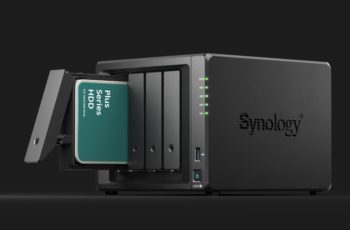Every company has hundreds or thousands of digital devices that need to be managed. And secured. Unified Endpoint Management (UEM) is a modern solution that simplifies the monitoring, maintenance and security of devices across locations and platforms, such as laptops, smartphones and desktops, within a single console. Like the entire digital environment, UEM is constantly evolving. We can also expect many innovations in the future. In this blog we provide information about the current state of affairs and also look ahead to future developments.
What is UEM?
But first, let’s examine UEM in more detail. UEM unifies previously fragmented device management tools into a unified platform. This centralized approach integrates the capabilities of legacy systems such as Mobile Device Management (MDM) and Enterprise Mobility Management (EMM). MDM enabled device-level control, allowing organizations to configure settings, manage applications, and enforce security policies on smartphones and tablets. EMM expanded this concept to include features such as mobile application management and threat detection, but remained focused on mobile devices.
UEM goes a step further and consolidates these capabilities into a much more comprehensive solution that supports more systems than just mobile devices. With UEM, businesses can now manage all types of devices – from smartphones and laptops to IoT devices – through a single platform, regardless of their operating system or location. By enabling IT teams to gain visibility and control across the entire device ecosystem, UEM has become a fundamental part of managing the often very diverse environments we work with today – in the office, on the go and on-site.
Key features of UEM
UEM solutions typically offer features that improve the way companies manage and secure their devices:
- Centralized monitoring and control: UEM’s unified platform enables teams to consistently monitor devices and perform necessary updates remotely, regardless of the device’s location.
- Optimized processes: By integrating multiple tools into a single solution, UEM helps organizations reduce the complexity of using a variety of separate solutions, making it easier to apply patches, deploy updates, and identify vulnerabilities.
- Basic security: UEM enables essential security measures such as enforcing security policies, configuring devices, and ensuring compliance – all through one platform.
By simplifying endpoint management, UEM delivers value by improving user experience, increasing security, and increasing operational efficiency. However, there are limits to UEM’s capabilities, especially when it comes to advanced security.
The challenges of relying solely on UEM
While UEM offers comprehensive device management, it is not fundamentally designed to address the increasingly demanding cybersecurity challenges of modern threats. In particular, UEM struggles to provide the rapid response and automation needed to effectively mitigate attacks and ensure complete visibility across all endpoints. As cloud environments expand and the variety of endpoints increases, these limitations become more apparent.
Additionally, traditional UEM tools often lack the flexibility to manage and respond to threats in real-time. Although they provide visibility and a degree of control, they may be slow to detect or respond to emerging vulnerabilities, leading to potential security risks. To address these gaps, several advanced endpoint solutions have emerged that combine UEM’s comprehensive device management with advanced security features.
Beyond UEM: Advanced Endpoint Management Solutions
These new solutions are called Endpoint Detection and Response (EDR), Extended Detection and Response (XDR) and now Converged Endpoint Management (XEM). They offer a more proactive and integrated approach to endpoint security.
- EDR: Focuses on detecting and responding to threats on individual devices, using techniques to analyze device behavior and detect anomalies that could indicate a potential attack.
- XDR: Extends EDR by integrating data from multiple sources, such as network traffic, email and cloud services, for a more holistic view of potential threats across all endpoints and faster, more comprehensive responses.
- XEM: The latest innovation in endpoint management combines the strengths of UEM with additional tools that leverage machine learning and AI. XEM solutions enable real-time monitoring and behavior-based detection, automating responses to potential security threats before they impact the business.
These advanced solutions shift endpoint management from a reactive to a proactive approach, enabling organizations to detect vulnerabilities, predict threats and respond quickly. By combining security features with UEM’s core management capabilities, these solutions add an additional layer of resiliency to endpoint management.
The Future: Autonomous Management of Endpoints
The concept of Autonomous Endpoint Management (AEM) is now emerging as the next evolutionary step in endpoint security. AEM aims to integrate automation and AI-based insights into endpoint management, reducing manual monitoring and improving speed of response to potential threats. By using AI, companies can predict and prevent security incidents while streamlining device management.
Tanium has positioned itself at the forefront of this endpoint management evolution by developing Converged Endpoint Management (XEM) solutions that integrate the capabilities of UEM with advanced security and operational capabilities. With Tanium’s XEM platform, organizations can centralize endpoint control, enforce compliance and reduce risk, all from a single platform. By automating processes such as patch management, remote software distribution, and device configuration, Tanium’s XEM platform enables IT teams to meet both operational and security needs more efficiently. A development that is more than welcome given the relentless fight against cybercriminals.
This is a commercial contribution from Wytze Rijkmans, Regional Vice President of Tanium. The publishers are not responsible for the content. You can find more information about their services here.























